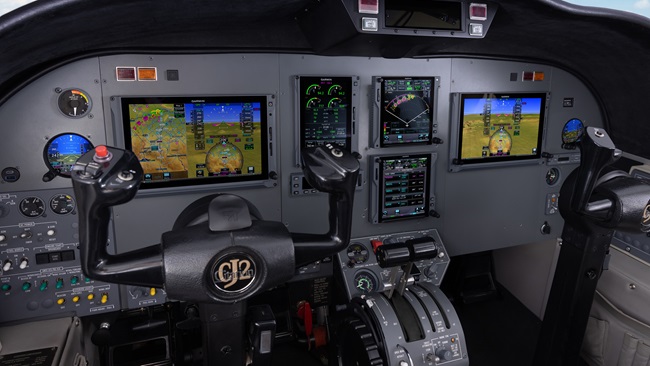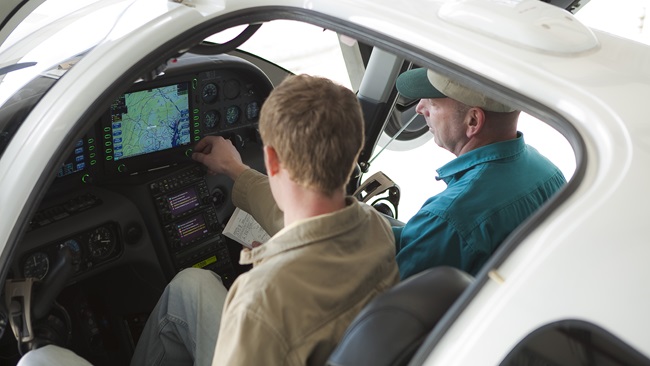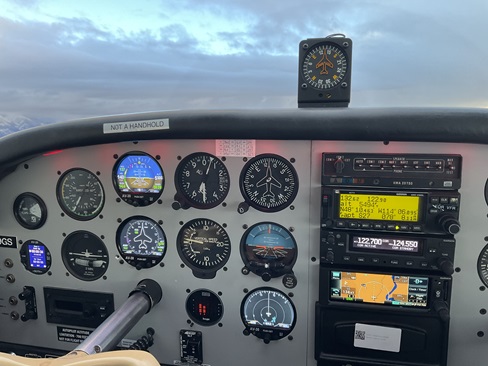Avidyne sets its sights on business aviation with Atlas FMS
Avidyne introduced its Atlas dzus-mount flight management system (FMS) for turbine aircraft and helicopters on October 15 ahead of the National Business Aviation Association's annual conference.
Based on technology found in thousands of panel-mount Avidyne IFD navigators, the Atlas promises turbine operators a wide array of features along with a reduction in operating costs. The system integrates with a range of electronic flight information systems to enable satellite-based augmentation system (SBAS)/LPV approach capability and includes touch-screen and keyboard user interfaces; moving map with airspace, terrain, weather, and traffic displays; Jeppesen approach plates and airport diagrams; Wi-Fi and Bluetooth connectivity; integration with a variety of electronic flight bags; and a built-in USB charger. Introductory pricing starts at $44,999.
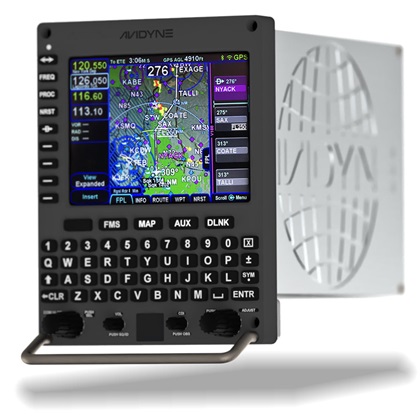
“Over the past year, Avidyne has been active with panel-mount IFDs in light turbines,” said Schwinn. “Turbine aircraft charter operators with 10- to 15-year-old aircraft are very cost conscious.” Besides the lower installation costs of the Atlas unit, Schwinn said the recurring costs for updates to the FMS database and electronic approach plates are much lower than the competition. Additionally, those updates can be installed with a standard USB memory stick using the port located on the front of the unit. “The lower operating costs make a huge difference for these turbine operators. Weight and space savings are also an important consideration,” said Schwinn. He gave an example of a customer who, by adding the VHF nav/com radio option, was able to remove multiple radio boxes and associated equipment from the nose of the airplane, freeing up significant weight and baggage space.
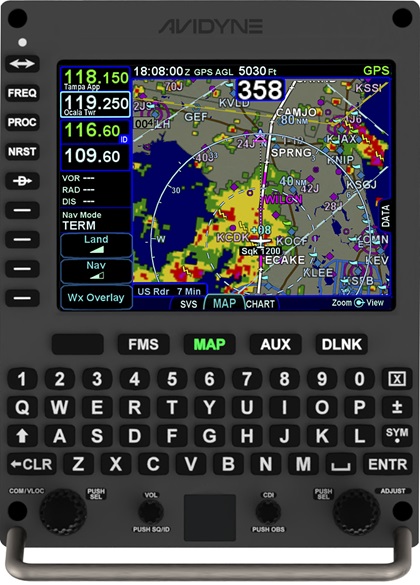
Avidyne’s target market for the Atlas includes the Beechjet 400A, Lear 60, Bombardier Challenger 604, Hawker 800, Gulfstream II/III/IV, and Dassault Falcon 50/900/100/200, plus turbine rotorcraft—representing an estimated 9,700 aircraft.
Schwinn’s message to the business market is: “You can take us seriously as a provider in the turbine market—either with panel-mount IFDs or the console-mount Atlas. We have mature products. Avidyne is here to play in business aviation.”
The Atlas is expected to be certified sometime in 2020, and supplemental type certificates will follow.
Pilots can get a firsthand look at the system at the 2019 NBAA Business Aviation Convention and Exhibition from October 22 to 24 in Las Vegas and at HAI Heli-Expo from January 27 to 30 in Anaheim, California.


